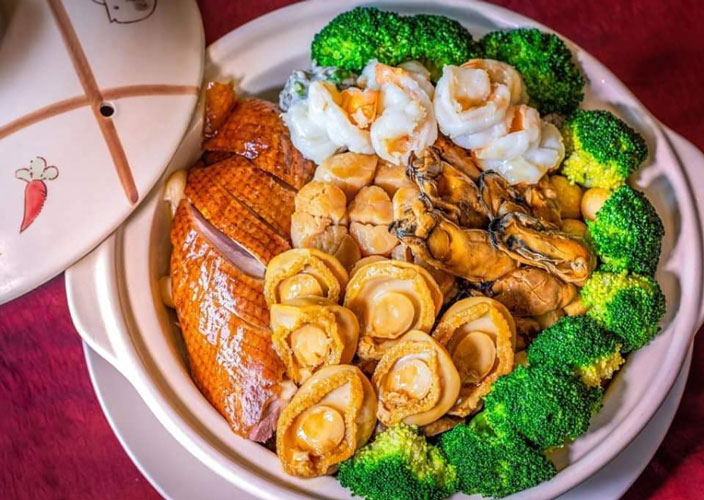With the Chinese New Year behind us, chances are your holiday feasting experience fell somewhere between appetizing and abhorrent. This month, we’re here to surmise what part of the pig you may have devoured on that inebriated night of firecrackers, red envelopes and related madness, so that you can either avoid such fare in the future, or, like a gastronomic swashbuckler, recreate the dish in your own kitchen. To our dear vegetarian readers: we regretfully acknowledge this whole thing is probably offensive, but when in Rome, do as the Romans do, which in this case means learning how to cook an entire pig without wasting a trotter. Bon appetit, Babe!
Tail: The squiggly tail shines in a range of delicious recipes, from stewing in soup with white radish to braising in soy sauce, star anise, sugar and yellow rice wine.
Intestines: Beijing Luzhu (北京卤煮) is one of the city’s renowned culinary wonders; a salty pot of pig intestines and lung, bean curd, Chinese prickly ash, onions, soy sauce, ginger, sugar, cooking wine and coriander.
Ears: Stiff and sometimes difficult to chew, pig ears are best stir-fried with hot peppers or stewed in soy sauce.
Lungs: Adored by Cantonese as a key ingredient in nourishing soup prepared with white radish, candied dates and ginger.
Trotters: These nutritious morsels are the newest fad in NYC, popular for their high collagen content, which helps maintain young, flawless skin. In China, pig trotters are commonly stewed with soybeans, sugar, ginger, scallions and salt.
Liver: Rich and savory, pig liver melts on the tongue and is commonly stir fried with onions or hot peppers. Quanzhou, Fujian, is famous for frying a pan of pig liver topped with chestnuts, bamboo shoots, mushrooms, onion, ginger and soy sauce.
Stomach: Tasting the most ‘piggy’ of all, the stomach is either sauteed or cut into hollow slices and packed with glutinous rice, barley, ginger and mushrooms, then steamed for an hour.
Blood: It’s quite normal in China to consume the blood of animals, especially to prevent iron deficiency. In Nanjing, duck blood is the famous ingredient in a specialty soup featuring vermicelli (鸭血粉丝汤). Pig blood can be prepared in a similar fashion, stewed with tofu or sauteed with leeks, scallions and ginger.
Heart: This vital organ takes well to sautéing with veggies and is often made into a soup with black dates, lotus seeds and ginger to aid in recovery from pregnancy. Packed with iron, pig hearts are believed to boost immunity and treat insomnia, spontaneous sweating and palpitation (because healing one’s heart by eating another just makes sense).
Brain: This squishy organ is generally added to hot pot, which allows it to soak up spicy broth and look (almost) good enough to eat.
Tongue: A wild card for yummiest cut of pork, the tongue is tender and lean and most suited to stewing before serving with a spicy dipping sauce.
Head: The noggin is famously prepared in Nanjing, where Liuhe Pig Head (六合猪头肉) was listed as a national intangible cultural heritage in 2012 for its delectable taste. It’s made by stewing a pig head with Chinese five-spice blend, sugar, dried tangerine peel, garlic, onion, bay leaf, red pepper, soy sauce and cooking wine.






















0 User Comments